In the "Catalogue of Shapes" in the free shape collection, there are suggested Custom Page Sizes for the QST.
In this case, for 24, we can cut the freezer paper 6.75 x 10 and print a "Custom Page Size" with any ordinary Inkjet printer. (Instructions for printing your first custom size on inklingo.com under "Support & Goodies.")
Next, iron the FP to the right side of the fabric and trim the fabric to the same size with scissors at the ironing board. (Print on Fabric - Best Tips, one of the Top Ten Tutes on the All About Inklingo blog).
Press on the paper side and the fabric side with a HOT dry iron to get a good bond.
(Tips for printing Jam-Free on Quilting Hub)
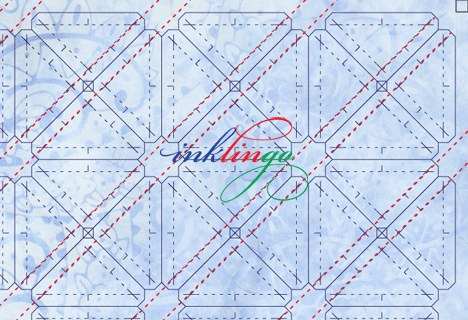
Then layer the printed fabric right sides together with unprinted fabric and stitch along the diagonal lines. For a "scant" quarter inch seam allowance, stitch immediately beside the lines in the seam allowance, not ON the lines.
When we sew the stretchy bias seams before they are cut, there is no distortion. This is much faster and easier than sewing individual triangles!
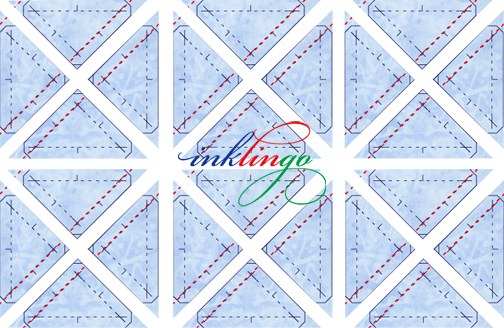
Use a rotary cutter or scissors to cut the triangles apart.

Press to the dark . . .
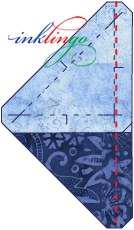
. . . and stitch the last seam!
The seam allowances will nest at the intersection so you can get nice sharp points. I like to release a few stitches so I can press all the seams around the intersection.
It reduces the bulk and makes the quilting easier.
Isn't that easy? A line to sew along, a line to cut on. Perfect results with no waste. No measuring. No templates. No paper to pick off!
MANY SIZES
There are many sizes of QST available. They are listed in the Inklingo Index of Shapes (under the Support & Goodies tab on the website).
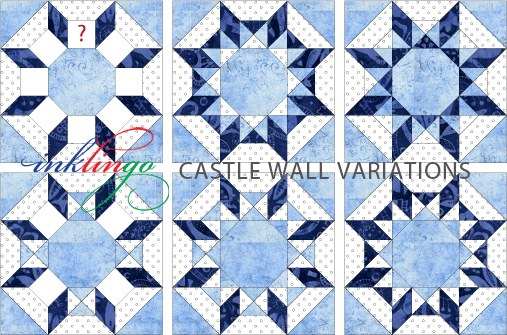
You can use Hourglass blocks to replace squares in any design. I included QST in the new Castle Wall shape collection for 6 inch blocks, so you can replace the squares with Hourglass blocks.
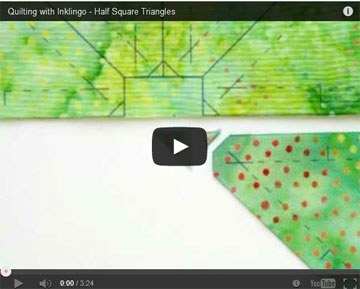
By the way, this same method works for Sawtooth Squares with Half Square Triangles. This short video shows you how!
There is also a free PDF with Triangle Tips under the Machine Piecing tab at Inklingo.com and several short lessons in the Top Ten Tutes on the All About Inklingo blog.